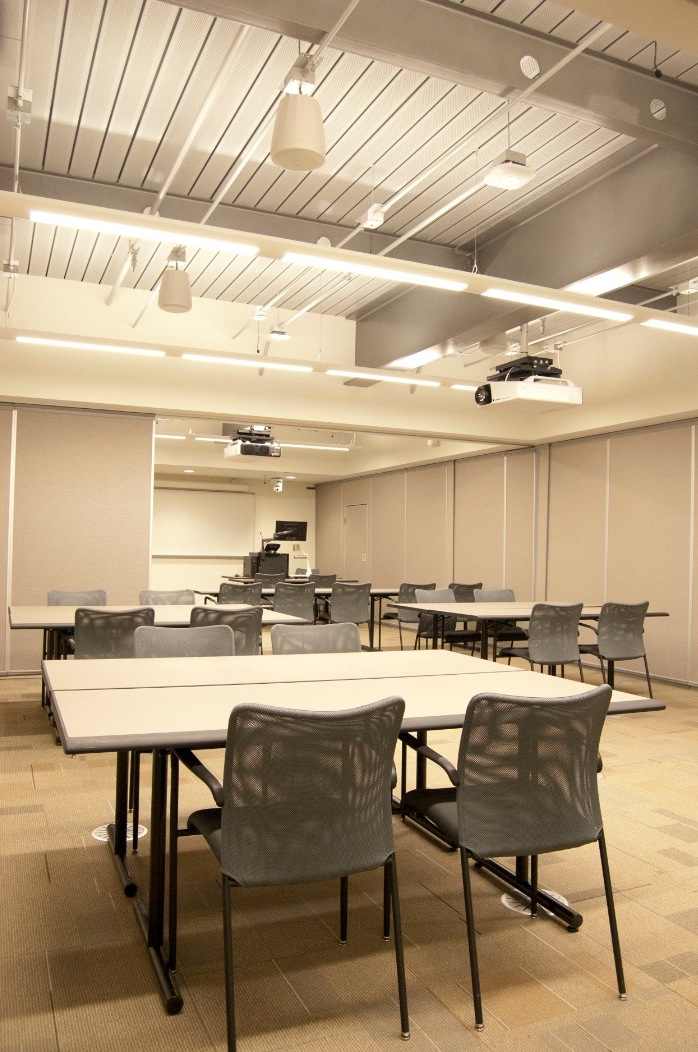For years, MEP engineers have debated the untapped potential lying within the walls and ceilings of virtually every modern commercial building: fire protection piping. Building owners sink a hefty sum into fire sprinkler infrastructure. Why not tap into this water distribution network for other uses, like toilet flushing?
Until recently, code officials have told Building Teams “hands off,” for fear of jeopardizing the integrity of these critical systems. But they are slowly coming around.
Two recent innovations are indicative of the trend. The first, the Fluid-Driven Sprinkler Light, utilizes a water turbine micro-generator with high-illumination LED light engines to provide emergency lighting without the need for batteries or other power sources (pictured above). Developed by the Industrial Technology Research Institute, the technology can provide for safer access and egress during fires, when buildings are engulfed by smoke.
High temperatures activate the sprinklers, and the flow of the water generates electricity to power the LEDs, which project a laser-based holography pattern light. The lights can be positioned to illuminate evacuation routes.
For the $29 million, four-level addition to the University of Michigan’s Institute for Social Research Expansion, in Ann Arbor, the engineering team, led by MEP engineer Peter Basso Associates, utilized the building’s fire protection piping system to distribute chilled water to the chilled beams (pictured, below). The dual-function design eliminated approximately 70% of the piping normally associated with a chilled beam system, and reduced first cost by an estimated $500,000.
It is the first installation of its kind in the U.S., and it required that all components of the combined fire protection/chilled beam system be rated for a minimum 175 PSIG (pounds per square inch gage) operating pressure, according to Brian Runde, PE, LEED AP, VP with Peter Basso Associates. He says using chilled beams helped the project reduce overall building energy use by 37.2% versus an ASHRAE 90.1-compliant building.
 Photo: Peter Basso Associates
Photo: Peter Basso Associates
Related Stories
Great Solutions | Apr 13, 2020
Family workstations highlight the new Fairfield Area Library
The workstations are the perfect remedy for squirming, restless children and toddlers.
Great Solutions | Feb 5, 2020
Power moves: The Shed
Precise positioning of mechanicals above its lighting keeps New York’s kinetic event space, The Shed, running.
Great Solutions | Dec 18, 2019
Robot uprising
Thyssenkrupp’s robotics interface platform helps robots use elevators like humans.
Great Solutions | Nov 12, 2019
Skanska designs personal protective equipment tailor-made for the female workforce
A safety vest is the first piece of equipment to undergo an update.
Great Solutions | Oct 3, 2019
REEF Technology wants to turn parking facilities into urban mobility hubs
The company currently operates 4,500 parking lots in 25 markets across North America.
Great Solutions | Aug 30, 2019
An ‘Internet of Beings’? Kinetic flooring promises more than just energy generation
Pavegen says its technology delivers a new level of human engagement in sustainability initiatives.
Great Solutions | Aug 7, 2019
Earthquake response system takes the guesswork out of seismic safety
The platform provides real-time monitoring to help avoid unnecessary evacuations and improve emergency response.
Great Solutions | Jul 12, 2019
Smart sensor maintains privacy, enhances safety in sensitive spaces
The HALO IOT sensor is designed for use in places where cameras are not welcome.
Great Solutions | Apr 9, 2019
Raising the roof is cool again
Upbrella allows for floor-by-floor building construction that is, reportedly, safer and more productive than traditional methods.
Great Solutions | Mar 12, 2019
When is wood not really wood?
Inspired by the look and cellular nature of wood, researchers create 3D-printed “digital wood” and “metallic wood” that is as strong as titanium, with the density of water.

















